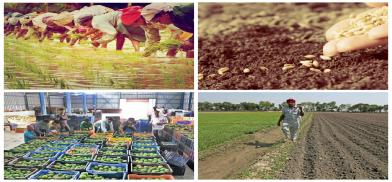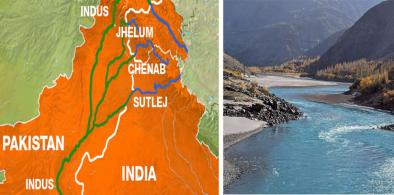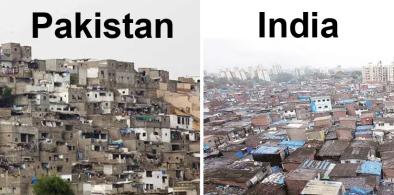India needs labor-intensive manufacturing employment to stall reverse migration
Indian industry must have a conducive environment to invest and employ more workers from farms, writes N Chandra Mohan for South Asia Monitor

Notwithstanding decades of post-Independence development, India still is "one of the few examples left in the world of an enormous population still largely dependent on agriculture", to borrow an expression of the late historian Eric Hobsbawm.
To be sure, the process termed modern economic development in terms of a shift in the population away from agriculture towards industry and services in towns and cities. has been underway. But of late there has been a noteworthy reversal in terms of migration from factories back to the farms of rural India. This trend has serious implications for living standards and deserves policy intervention.
According to the decennial censuses– a massive exercise involving a headcount of a billion-plus population -- the movement of labor away from agriculture had gathered momentum in recent decades after a period of stasis. Although the much-delayed shift to non-agricultural activities began in 1991, the share of workers living off the land remains substantial. Between the 2001 and 2011 Censuses, for instance, the result that attracted the most attention was the shrinkage of the farmer population.
Even the National Sample Survey Organisation’s five-yearly surveys, which have been discontinued after 2010-11, corroborate this shift from agriculture.
Agricultural employment share up
Since then, the big factor of change is the movement of nonagricultural workers back to the farms. The government’s latest Periodic Labour Force Survey for 2019-20 shows a substantial increase in employment in agriculture from 42.5 percent of total employment in 2018-19 to 45.6 percent in 2019-20.
The 3.1 percentage points increase amounts to a massive 33 million people going back to agriculture in a single year. More than half of these workers have come from manufacturing (mostly unorganized), construction, transport, storage and communication activities in the towns and cities, whose share in total employment have declined.
The fact that this reverse migration is not a one-off occurrence is borne out by the Consumer Pyramid Household Surveys of the Centre for Monitoring the Indian Economy. Although the share of agricultural employment is much lower than in the Periodic Labour Force Survey, labor absorption in this sector steadily rose from 35.3 percent in 2017-18, to 36.1 percent in 2018-
19, then to 38 percent in 2019-20. Employment in agriculture further increased to 39.4 percent in 2020-21.
The upshot is that the structural transformation associated with the textbook theory of economic development is no more in evidence during the last few years.
Weak economic growth
The proximate causes include the weakening of India’s economic growth since 2017-18. Declining GDP growth translates into fewer opportunities for gainful employment for those who move from the countryside to the towns and big cities for work.
At a time when the organized sector employment growth is sluggish, if not contracting, the brunt of adjustment is borne by the low-paying unorganized or informal sector that includes self-employment and casual odd jobbing. Even these opportunities dwindled, triggering reverse migration, due to shocks like demonetization in November 2016, the introduction of a Goods
and Services Tax and lockdown to battle Covid-19.
From a policy standpoint, focusing on an agenda to create more productive jobs out of agriculture should be the topmost priority. While many progressive changes, including reforms, have taken place, the growing numbers of Indians living off the land have extremely serious distributional outcomes.
The sector is passing through a serious crisis, owing to the pressure of population, the average size of land holdings is getting more fragmented over time. Farming at the margin, thus, is getting more unviable. Further additions to the labor force will only swell the growing ranks of agricultural laborers with fewer employment opportunities.
The remedies
Manufacturing and services must become the engine of employment growth so that the shift from the farm to non-farm sector gets underway again and the share of agriculture in employment goes further down from 45.6 percent to, say, 30 percent over the next five to ten years. This implies addressing how many workers will industry and services have to absorb in the coming years. If fewer jobs are created outside agriculture more will be forced to stay in this sector, increasing the pressure on land and lowering incomes.
In this milieu, there are no prizes for guessing that social strains are bound to intensify as income inequalities worsen.
Indian industry must have a conducive environment to invest and employ more workers from the farms. This calls for skill development on a massive scale.
Labor law reform, that encourages greater flexibility while providing a safety net for the unemployed is equally necessary. In this context, it is interesting that while Prime Minister Narendra Modi encourages India Inc to take risks to invest, other ministers are making gratuitous comments that industry’s practices are against national interests; that large industries must pitch in to help start-ups.
The need instead is for labor-intensive manufacturing employment. Reverse migration cannot be tackled with such mindsets.
(The writer is an economics and business commentator based in New Delhi. The views expressed are personal. He can be reached at nchandramohan@rediffmail.com)




















Post a Comment